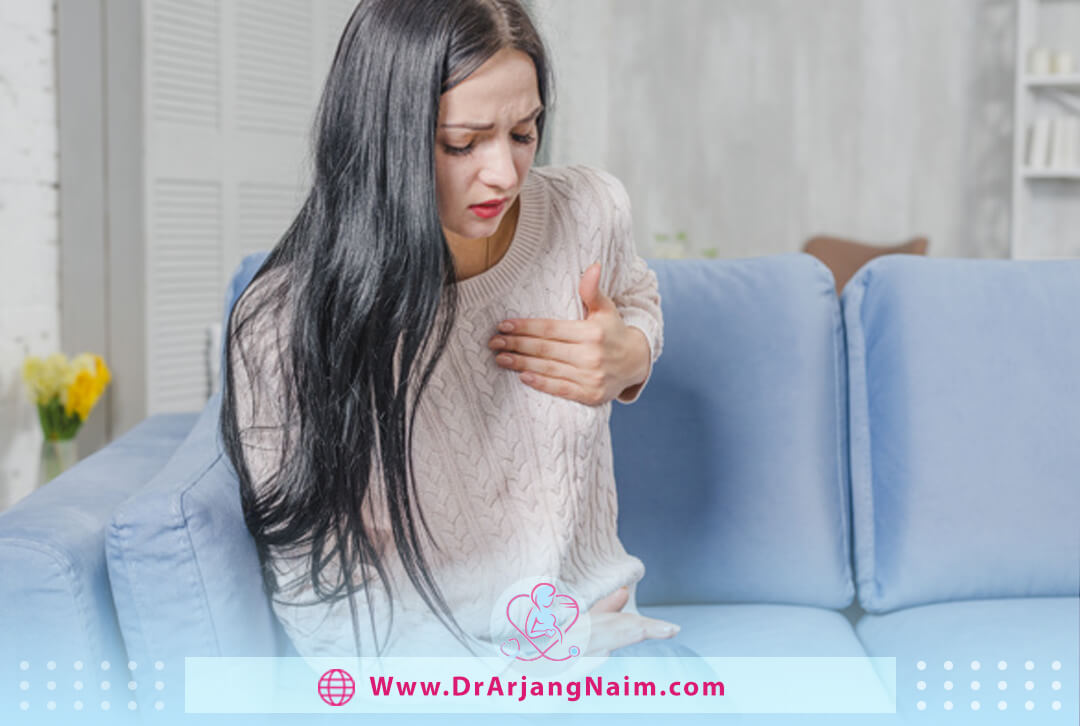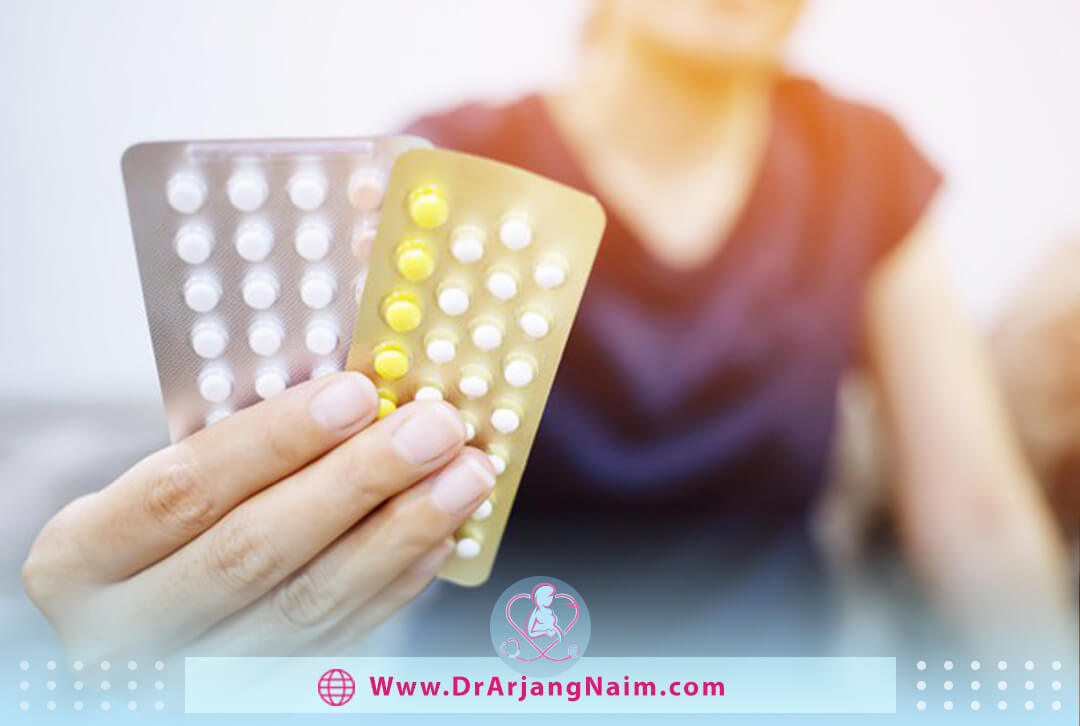The normal menstrual cycle lasts from the first day of menstruation to the first day of the next menstrual period. The average menstrual cycle is about 25-30 days, but it can be 21 days or more than 35 days and varies from person to person. The number of days in the cycle may also vary from month to month. When a woman menstruates, it is normal to bleed for 2 to 7 days.
The monthly menstrual cycle is a set of changes in a woman’s body that prepares her for pregnancy. Each month a new wall grows to make an egg in the uterus. If there is no fertilized egg to start the pregnancy, the uterus wall collapses, and bleeding occurs; This menstrual bleeding is a period that women experience from the early years of adolescence to the age of 50.
Normal menstruation cycle
The menstrual cycle is a term used to describe the sequence of events that occur in a woman’s body because she prepares for the possibility of pregnancy each month. The menstrual cycle stages begin with the rise and fall of a chemical in the body called a hormone. The pituitary gland in the brain and ovaries in the female reproductive system produce and release certain hormones during the menstrual cycle that cause the genitals to respond in certain ways. Specific events that occur during the menstrual cycle can be described as follows:
- The menses phase: This stage usually lasts from day one to five, when the uterine lining comes out of the vagina if the women are not pregnant. Most women bleed for three to five days, but a regular menstrual cycle can be only two or seven days.
- The follicular phase: This step is usually done from days six to 14. During this time, estrogen levels rise, causing the lining of the uterus to grow and thicken. Also, another hormone called follicle-stimulating hormone stimulates the growth of ovarian follicles. During days 10 to 14, one of the growing follicles will form a fully mature egg.
- Ovulation: This stage occurs around day 14 in a 28-day menstrual cycle. A sudden increase in another hormone called luteinizing hormone causes the ovary to release its egg. This event is called ovulation.
- The luteal phase: This stage lasts from about 15 to 28 days. Once the egg is released from the ovary, it travels through the fallopian tubes to the uterus. Progesterone levels rise to help prepare the lining of the uterus for pregnancy. If the egg is fertilized by sperm and attaches to the uterus wall, the woman becomes pregnant. In the absence of pregnancy, estrogen and progesterone levels decrease, and the uterus’ thick lining disappears during menstruation.
Symptoms of normal menstruation cycle

Not every woman will experience the same symptoms before menstruation. Common symptoms include:
- Breast swelling and tenderness
- Tension
- Bloating
- Acne breakouts
- Leg, back, or stomach cramping
- Premenstrual syndrome
Some women may confuse menstrual symptoms with early pregnancy symptoms because some of them are similar. These include a missed period, breast tenderness or swelling, frequent urination, nausea, and fatigue.
Premenstrual syndrome
Some women experience symptoms of premenstrual syndrome (PMS). These very common conditions can include symptoms such as:
- Rapid changes in mood
- Insomnia
- Dizziness
- Social withdrawal
- Difficulty concentrating
- Breast tenderness
- Tiredness
- Bloating
The severity of these symptoms can vary from person to person. Changes in hormone or serotonin levels may cause the premenstrual syndrome.
Premenstrual dysphoric disorder
Some women experience a severe form of PMS known as premenstrual dysphoric disorder (PMDD). This can lead to the following symptoms:
- Feelings of being overwhelmed
- Concentration difficulties
- Irritability
- Tension
- Depression
- Mood swings
- Anger
- Anxiety
If these symptoms occur in a woman, she must see a gynecologist.
How to track the menstrual cycle?
For a woman to know she has a normal menstrual cycle, she must keep her menstrual history on a calendar. Diagnose menstruation by tracking menstruation’s start date every month and several months in a row until it is regular. Women should note the following to keep track of their menstrual cycle:
- End of menstruation: How long does menstruation normally last? Is it longer or shorter than usual?
- Menstrual blood flow: Record the severity of blood flow. Does it look lighter or heavier than usual? How many times do you need to change your sanitary napkin? Have you passed a blood clot?
- Abnormal bleeding: Do you bleed between periods?
- Pain: Describe any pain related to menstruation. Is the pain more than usual?
- Other changes: Have you made any changes to your mood or behavior? Has anything new happened during the change in your courses?
Why do cycles vary?
A normal menstrual cycle length is determined by age, genes, health, body mass index (BMI), behaviors, and contraception methods. The cycles should usually be regular if a woman has been menstruating for several years. Changes may also occur in some situations. The cycle’s length depends on hormones, which may fluctuate due to factors such as diet, stress, jet lag, night shift work, exercise, or taking emergency contraceptive pills. Heavy smoking and heavy alcohol consumption may also affect the length of the period or change it.
When ovulation does not occur regularly, the menstrual cycle can fluctuate. This could be due to a health condition such as polycystic ovary syndrome (PCOS) or a thyroid disorder. Incompatible ovulation and variable periods may also occur at certain life stages, such as puberty, postpartum, breastfeeding, and menopause.
What is the normal menstruation cycle length for people who do not use hormonal birth control?
The length of the menstrual cycle can vary at different ages. Menstrual irregularities are normal at the onset of menstruation and before menopause.
Adult cycle length
The menstrual cycle length is usually between 24 and 38 days for an adult who does not use any hormonal contraceptive method. Changes during the cycle are common. In one year, the length between the longest and shortest cycles can vary up to 9 days and still be considered in a regular range. For example, a typical change might be a 25-day cycle followed by a 33-day cycle.
Adolescent cycle length
Adolescent menstrual cycles around the time of menstruation (first menstruation) can be very different. It is common for cycles to change several years after the first period. This means periods may not always be the same in each cycle and vary somewhat from cycle to cycle. With age, the cycles become more predictable to reflect the adult cycle range but may still be somewhat variable.
In the first few years after menstruation begins, a typical menstrual period for a teen is usually between 21 and 45 days, but it can sometimes be longer or shorter.
Take care of bleeding and related symptoms
Women can use a menstrual pad, tampon, or cup to control bleeding. Change the tampon at least every four to eight hours. Menstrual cups can be used for up to 12 hours. Menstrual pads or cups are the best options for use at night.
Many women can improve their symptoms by exercising regularly and eating a healthy diet. It may also help limit alcohol and caffeine. Try to reduce stress. A heating pad, hot water bottle, or hot bath can help reduce menstrual cramps. To reduce pain and bleeding, women can use over-the-counter medications such as ibuprofen or naproxen before menstruation.
What if women’s periods are more frequent than every 21 days?

There are many situations where a women’s period may come more frequently than every 21 days. People in the premenopausal period may experience shorter, more irregular periods until they reach menopause. Other factors that may shorten the length of the cycle include:
- Hormonal birth control
- Uterine fibroids
- Lack of ovulation
- Stress
- Temporary illnesses, such as the flu
- Significant weight changes
What if woman periods are further apart than every 35 days?
Women usually menstruate between the ages of 9 and 15. On average, each person experiences at least four periods in the first year of menstruation. This number gradually increases over time; each adult has at least nine cycles per year on average. This means that some periods may naturally occur more than 35 days apart. Occasional delays may occur due to the following:
- Stress
- Intense exercise
- Significant weight changes
- Hormonal birth control
- Perimenopause
- Pregnancy
- Chronic delay may be due to an underlying disease such as polycystic ovary syndrome (PCOS)
When should women see a doctor about their menstrual cycle?
If a woman has the following conditions, she should see a gynecologist. Conditions include:
- A woman worries that she may be pregnant because she has unprotected sex and has lost her period.
- The menstrual cycle is so heavy that a pad or tampon must be changed every hour.
- Menstruation lasts much longer than usual or more than seven days.
- She is a 16-year-old girl and has not had a period yet
- Severe pain before or during menstruation
- Unusual bleeding between periods
- Menstruation or premenstrual syndrome interferes with daily activities
- Menstruation stops or suddenly becomes irregular
- Get very anxious or depressed every time have a period
- Period comes more often than every 21 days or less often than every 45 days
What is the normal amount of bleeding during a woman’s period?
The average woman loses about 2 to 3 tablespoons of blood during her period. Menstruation may be lighter or heavier than average. The amount of normal bleeding for one person may be abnormal for another. Also, the flow may become lighter or heavier from month to month. Blood volume may also change with age. Some women experience heavy bleeding during menopause and the transition to menopause. Symptoms of menorrhagia may include:
- Bleeding through one or more pads or tampons every one to two hours
- Passing blood clots larger than the size of quarters
- Bleeding that often lasts longer than eight days
The bottom line
The menstrual cycle is a familiar concept for women, which includes a series of physiological changes and prepares the body for pregnancy. Almost all of us know that the purpose of menstrual bleeding in women is to prepare the uterine tissue for a successful pregnancy. In fact, in the natural state, all stages and events occur in such a way that pregnancy occurs in a woman’s body.
This way, the egg is released from the ovary and travels to the uterine tissue. It will then be fertilized by contact with sperm. But if this process does not occur, the risk of pregnancy is reduced. As a result, the uterine wall’s tissue, called the endometrium, sheds through a series of unique mechanisms. This will replace old tissue with new tissue and, of course, be expelled from the body.
A woman’s normal menstrual cycle may not be the same in different months. Bleeding may be mild, moderate, or severe, and its duration may vary. Although most periods last 3 to 5 days, between 2 and 7 days are normal. In the early years of menstruation and in the near-menopausal age, cycles may be quite irregular.
If you have a menstrual cycle disorder, regular checkups with a gynecologist can help you resolve any potential problems. Arjang Naim, MD checks the health condition in each checkup and diagnoses the cause and the best treatment method in case of normal menstrual cycle disorders.
Additional questions
- How common is Menometrorrhagia?
Menometrorrhagia is caused by hormonal problems, uterine problems, or other health conditions. It is diagnosed with a pelvic exam, ultrasound, Pap test, and sometimes a biopsy.
2. What hormones change menstrual cycle results?
When the follicular phase begins, estrogen and progesterone levels are low. As a result, the top layers of the thickened lining of the uterus are broken and shed, and menstrual bleeding occurs.
3. What are the four hormones in the menstrual cycle?
- LH
- FSH
- Estradiol
- Progesterone
4. How many days after the period is it ovulation?
The menstrual cycle starts from the first day of the period and continues until the first day of the next period. Women are most fertile when they ovulate, which usually occurs 12 to 14 days before their next period.
5. What is the relationship between ovulation and menstruation?
Ovulation is when an egg is released from the ovary to be fertilized. Menstruation is bleeding that happens after ovulation if there is no fertility.
References
https://my.clevelandclinic.org/health/articles/10132-normal-menstruation
https://www.mayoclinic.org/healthy-lifestyle/womens-health/in-depth/menstrual-cycle/art-20047186
https://www.webmd.com/women/normal-period
https://www.womenshealth.gov/menstrual-cycle/your-menstrual-cycle
https://www.healthlinkbc.ca/illnesses-conditions/sexual-reproductive-health/normal-menstrual-cycle




